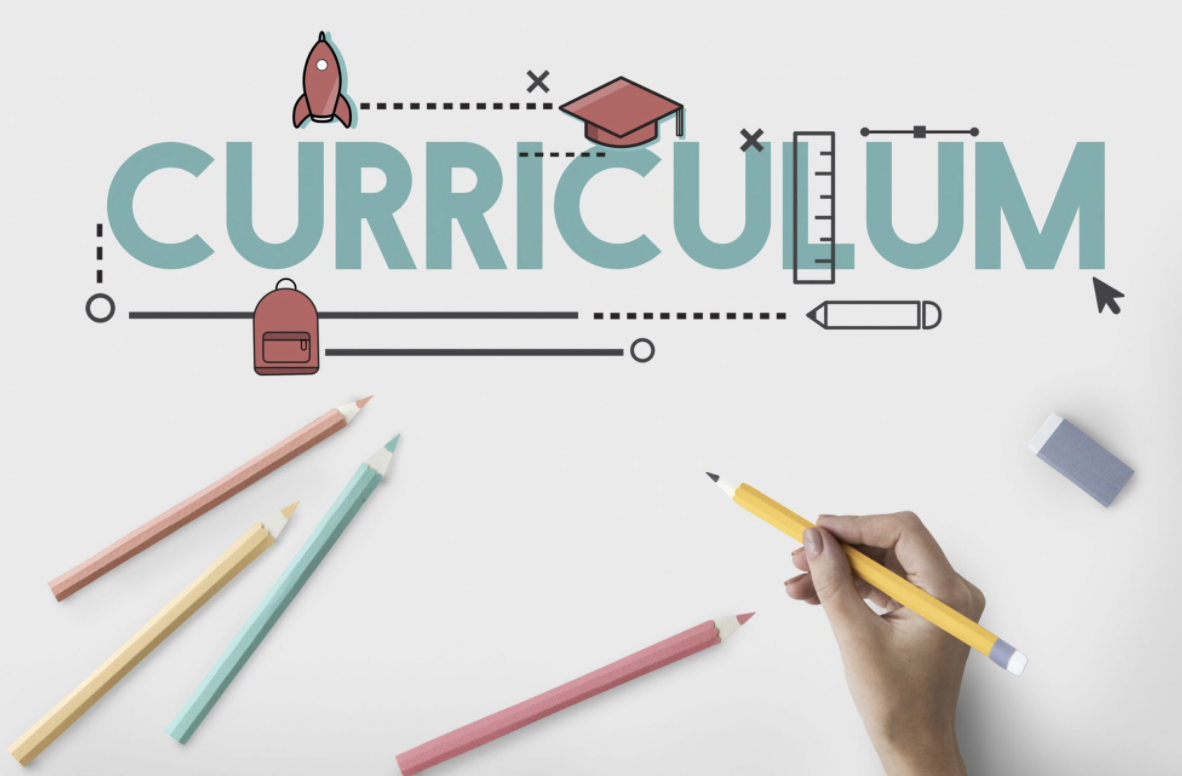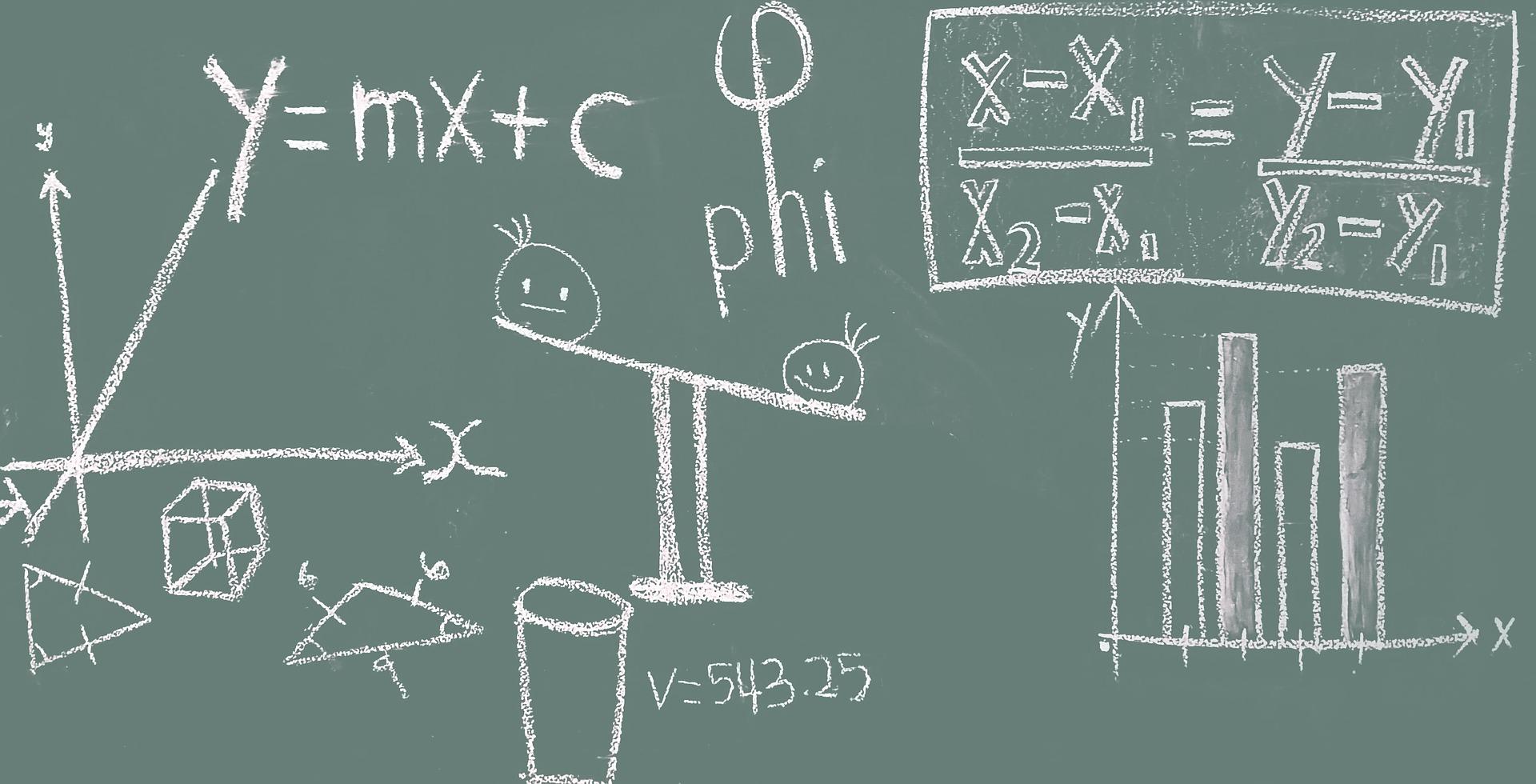High school is an important stage in the life of a student. Especially, students in class 11 and class 12 must be well-prepared for their board exams and prepare in earnest. Students must put in extra effort into subjects such as mathematics in which they can score high marks. Apart from being a very high-scoring subject, the broad objectives of teaching high school Mathematics, as laid down by the education boards of India, are intended to help students:
- To acquire knowledge and critical understanding of basic concepts, terms, principles, symbols, and mastery of underlying processes and skills.
- To feel the flow of reasons while proving a result or solving a problem.
- To apply the knowledge and skills acquired to solve problems and wherever possible, by more than one method.
- To develop a positive attitude to think, analyze and articulate logically.
- To develop an interest in the subject by participating in related competitions.
- To acquaint students with different aspects of Mathematics used in daily life.
- To develop an interest in students to study Mathematics as a discipline.
- To develop reverence and respect towards great Mathematicians for their contributions to the field of Mathematics.

Class 11 Maths Syllabus: CBSE
The CBSE Syllabus for Class 11 Maths has been revised for the academic session 2021-22, which was reduced by 30% the last year due to the spread of Coronavirus. Class 11 Maths not only helps students in their annual exam preparation but also in their preparation for competitive exams like JEE Main, JEE Advanced since these question papers are designed based on the CBSE Class 11 Maths Syllabus.
Know your board exam timetable for 2021 to be well-prepared!

Unit 1: Sets and Functions
Sets
- Sets and their representations
- Finite and infinite sets
- Universal set
- Venn diagrams
- Complement of set and properties of complement
Relations and Functions
- Cartesian product of sets
- Relation ( definition, diagram, domain, and range)
- Function ( diagram, domain, and range)
- Polynomial, rational, modulus, signum, logarithmic
- Sum, difference, quotient, and product of functions
Check out these simple revision tips for Maths exam.
Trigonometric Functions
- Angles (positive and negative)
- Signs of trigonometric functions
- Domain and range and graphs of trigonometric functions
- Deducing identities
- Identities related to sin2x, sin3x, cos2x, cos3x, tan2x, and tan3x.
Unit 2: Algebra
Principles of Mathematical Induction
- Process of proof by induction
- Principles of mathematical induction and simple applications
Complex Numbers and Quadratic Equations
- Algebraic properties of complex numbers
- Argand and polar representation of complex numbers
- The fundamental theorem of algebra
- Solving quadratic equations in complex numbers
- Square roots of complex numbers
Linear Inequalities
- Algebraic solutions and graphical representations of linear inequalities in one variable
- Graphical methods and solutions of linear inequalities in two variables
Permutation and Combination
- Fundamental principles of counting factorial (n!)
- Formula derivation for npr and ncr
- Simple applications
Missed out on a chance to clear your Board exams? It's not too late for adults to take Board exams.
Binomial Theorem
- Statement and proof of the binomial theorem in regard to positive indices.
- Pascal’s triangle
- Middle and general terms in binomial expansion
Sequences and Series
- Arithmetic Progression (AP) and Arithmetic Mean (AM)
- Geometric Progression (GP) and Geometric Mean (GM)
- The relation between AM and GM
- Infinite GM and its sum
Unit 3: Coordinate Geometry
Straight Lines
- The slope of line and angles between 2 lines
- Forms of equations of a line
- General equation of a line
- The distance of a point from the line
Conic Sections
- Sections of a cone: parabola, hyperbola, ellipse
- Properties and equations of a parabola, hyperbola, and ellipse
- Standard equations of a circle
Introduction to Three-Dimensional Geometry
- Coordinate axes and planes in 3D
- Distance between 2 points, section formula
- Coordinates of a point
How important is maths for your career? Find out here.
Unit 4: Calculus
- Intuitive idea of limits
- Limits of polynomial, rational, trigonometric, exponential, and logarithmic functions
- The derivative of the sum, difference, quotient, and product of functions
- Derivatives of polynomial and trigonometric functions
Unit 5: Mathematical Reasoning
Upskilling the mathematical reasoning skills of the students, this unit of the class 11 maths syllabus includes the following notable topics:
- Connecting words
- Understanding of conditions such as “if and only if”, “and/or”, “implies”, “implies by”, “there exists” and their uses
- Validating the statements involving the connecting words
- Difference between contradiction, contrapositive, and converse
Unit 6: Statistics and Probability
Statistics
- Measures of Dispersion (mean deviation, range, variance, and standard deviation of grouped and ungrouped data)
- Frequency distributions analysis
High school maths can be your stepping stone to a flourishing career. Find out how.
Probability
- Random experiments
- Sample spaces
- Events
- Axiomatic probability
- Probability of an event
- Probability of “not”, “and” and “or” events
Class 11 Maths Syllabus: ICSE
Mathematical Reasoning
- Connecting words/phrases – consolidating the understanding of “if and only if (necessary and sufficient) condition”, “implies”, “and/or”, “implied by”, “and”, “or”, “there exists” through a variety of examples related to real life and Mathematics
- Validating the statements involving the connecting words, differences between contradiction, converse, and contrapositive
Algebra
- Complex Numbers
- Quadratic Equations
- Finite and Infinite Sequence
- Arithmetic Progression (A.P.)
- Geometric Progression (G.P.)
- Harmonic Progression
- Arithmetic Geometric Series
- Special sums
- Permutations Combinations
- Mathematical induction
- Using induction to prove various summations and divisibility
- Binomial Theorem
- Significance of Pascal’s triangle
- Binomial theorem (proof using induction) for positive integral power
- Binomial theorem for negative or fractional indices
- Properties of Binomial Coefficients
Trigonometry
- Angles and Arc lengths
- Trigonometric Functions
- Compound and multiple angles
- Trigonometric Equations
Check out this comprehensive maths guide for classes 11 and 12.
Calculus
- Basic Concepts of Relations and Function
- Ordered pairs, sets of ordered pairs
- Cartesian Product (Cross) of two sets, the cardinal number of a cross product
- Types of Relations: reflexive, symmetric, transitive, and equivalence relation
- Binary Operation
- Domain, Range, and Co-domain of a Relation
- Functions
- Differential calculus
- Limits
- Continuity
- Differentiation
- Application of derivatives
- Integral Calculus
Coordinate Geometry
- Basic concepts of Points and their coordinates
- The straight lin
- Circle

Statistics
- Measures of central tendency
- Standard deviation - by direct method, short cut method, and step deviation method
- Combined mean and standard deviation
Vectors
- As directed line segments
- Magnitude and direction of a vector
- Types: equal vectors, unit vectors, zero vector
- Position vector
- Components of a vector
- Vectors in two and three dimensions
Coordinate Geometry in 3-Dimensions
- As an extension of 2-D
- Distance formula
- Section and midpoint formula
- Equation of x-axis, y-axis, z-axis, and a line parallel to them.
- Equation of xy – plane, yz – plane, zx – plane
- Direction cosines, direction ratios
Statistics
- Median – direct and by using the formula
- Quartiles – direct and by using the formula
- Deciles – direct and by using the formula
- Percentiles – direct and by using the formula
- Mode – graphically, direct method and by using the formula
- Estimation of median/quartiles from Ogives
Average Due Date
- Zero date
- Equated periods
Prepare for any course with an online maths tutor.

Class 12 Maths Syllabus: CBSE
Relations and Functions
- Composite functions
- The inverse of functions
Inverse Trigonometric Functions
- Graphs of inverse trigonometric functions
- Elementary properties of inverse trigonometric functions
Matrices & Determinants
- Concept of elementary row and column operations
- The existence of non-zero matrices whose product is the zero
- The proof of the uniqueness of inverse, if it exists
Determinants
- Properties of determinants
- Consistency, inconsistency, and number of solutions of the system of linear equations with examples
Continuity and Differentiability
- Without Proof: Rolle’s and Lagrange's Mean Value Theorems, and their geometric interpretation.
Applications of Derivatives
- Rate of change of bodies
- Use of derivatives in approximation
Integrals
- ∫√ax² + bx + c dx
- ∫(ax + b)√ax² + bx + c dx
- Definite integrals as a limit of the sum
Applications of Integrals
- The area between any of the two above-mentioned curves
Differential Equations
- Solutions of the linear differential equation: ds + px = q
Where p and q are functions/constants of y.
- The formation of a differential equation with a given general solution
Vectors
- A scalar triple product of vectors
Three-Dimensional Geometry
- Angle Between:
- Two planes
- Two lines
- A line
- A plane
Linear Programming
- A mathematical formulation of L.P. problems
- Unbounded
Probability
- Mean and variance of the random variable
- Binomial probability distribution
Class 12 Maths Syllabus: ICSE
The syllabus for the Class 12 maths course is divided into three sections: A, B, and C. Section A is compulsory for all candidates. Students can attempt questions from either Section B or Section C. There is 1 paper of 3 hours duration of 100 marks.
Determinants and Matrices
- Determinants
- Order.
- Minors.
- Cofactors.
- Expansion.
- Properties of determinants.
- Simple problems using properties of determinants
- Cramer's Rule
- Matrices
- Martin’s Rule
Boolean Algebra
- Boolean algebra as an algebraic structure
- Principle of duality
- Boolean function
- Switching circuits
- Application of Boolean algebra to switching circuits
Conics
- Definition of Foci, Directrix, Latus Rectum.
- Parabola
- Ellipse
- Hyperbola
Calculus
- Differential Calculus
- Integral Calculus
Correlation and Regression
- Definition and meaning of correlation and regression coefficient.
- Coefficient of Correlation by Karl Pearson.
- Rank correlation by Spearman’s (Correction included).
- Lines of regression of x on y and y on x.
Probability
- Random experiments and their outcomes.
- Events: sure events, impossible events, mutually exclusive events, independent events, and dependent events.
- Definition of the probability of an event.
- Laws of probability: addition and multiplication laws, conditional probability (excluding Baye’s theorem).
Complex Numbers
- Argument and conjugate of complex numbers.
- Sum, difference, product, and quotient of two complex numbers additive and multiplicative inverse of a complex number.
- Simple locus question on complex numbers
- Triangle inequality.
- The square root of a complex number.
- Demoivre’s theorem and its simple applications.
- Cube roots of unity: 1,ω,ω2; application problems.
Differential Equations
- Differential equations, order, and degree.
- Solution of differential equations.
- Variable separable.
- Homogeneous equations and equations reducible to homogeneous form.
- Linear form
Vectors
- Scalar (dot) product of vectors.
- Cross product - its properties - area of a triangle, collinear vectors.
- Scalar triple product - the volume of a parallelopiped, co-planarity.
- Proof of Formulae (Using Vectors)
- Sine rule.
- Cosine rule
- Projection formula
- Area of a Δ = ½ ab sin C
Coordinate Geometry in 3-Dimensions
- Lines
- Cartesian and vector equations of a line through one and two points.
- Coplanar and skew lines.
- Conditions for the intersection of two lines.
- Shortest distance between two lines.
- Planes
- Cartesian and vector equation of a plane.
- Direction ratios of the normal to the plane.
- One point form.
- Normal form.
- Intercept form.
- Distance of a point from a plane.
- The angle between two planes, a line, and a plane.
- Equation of a plane through the intersection of two planes
Probability
- Baye’s theorem
- Theoretical probability distribution
- Probability distribution function
- Binomial distribution (its mean and variance)
Discount
- True discount
- Banker's discount
- Discounted value
- Present value
- Cash discount
- Bill of exchange
Annuities
- Meaning
- Formulae for present value and amount
- Deferred annuity
- Applied problems on loans, sinking funds, scholarships
Linear Programming
- Definition of related terminology such as constraints, objective function, optimization, isoprofit, isocost lines
- Advantages and limitations of linear programming
- Applications of linear programming
- Types of linear programming (L.P.), problems, mathematical formulation of L.P problems, graphical method of solution for problems in two variables, feasible and infeasible regions, feasible and infeasible solutions, optimum feasible solution

Application of Derivatives in Commerce and Economics
- Cost function
- Average cost
- Marginal cost
- Revenue function
- Break-even point
Index Numbers and Moving Averages
- Price index or price relative.
- Simple aggregate method.
- Weighted aggregate method.
- Simple average of price relatives.
- Weighted average of price relatives (cost of living index, consumer price index).
NCERT Solutions for Class 11 Maths
NCERT Solutions for Class 11 Maths have been solved by the best Mathematics teachers in India, with many years of experience in the field of CBSE Board education. The solutions have been developed in order to assist students as they solve the complex mathematical problems provided in the CBSE textbook. All the chapters prescribed by CBSE have been included in NCERT Maths Class 11 Solutions. Students preparing for their exams will greatly benefit from using NCERT Solutions for Maths Class 11.
The NCERT Solutions for Class 11 maths have been provided in a systematic manner. This chapter-wise arrangement ensures that students can utilize their time judiciously. The step-by-step explanations provided in these solutions allow students to grasp the concept behind each topic. To ensure smooth learning, the experts have deconstructed even the most complex problems in a logical manner. Also, all the solutions are 100% accurate and as per the NCERT (CBSE Board) guidelines and syllabus.
Use past questions papers to revise maths lessons.
The NCERT Solutions make scoring high marks in Mathematics an attainable dream. These solutions also allow students to learn about the applicability of the various maths concepts in real life. Additionally, these will also benefit them in Class 12 and while preparing for various competitive examinations. With students solving complex problems, their approach towards solving questions in entrance examinations like JEE will also be polished.
NCERT Solutions for Class 12 Maths
Class 12 is an important milestone in the life of a student as they take some serious decisions about the future based on their performance in the Board exam. Indeed, Mathematics forms a vital component of Class 12 as well as every competitive exams’ syllabus. Whether you choose to be an engineer or a doctor, you will have to deal with Mathematics in every area. Having a concrete understanding of the concepts of Class 12 maths can immensely help you in securing good marks in the CBSE Class 12 board exam as well as in various competitive exams. CBSE NCERT Solutions for Class 12 Maths plays a vital role in your exam preparation as it has detailed chapter-wise solutions for all exercises.
The benefits of maths revision with Class 12 CBSE Maths NCERT Solutions are not only confined to success in Maths, but it also lays a foundation for other important subjects. You can easily download the free version of the CBSE Class 12th NCERT Maths Solutions PDF of every Chapter of Mathematics. The solutions for each exercise have been curated and reviewed by some of the best teachers across India.















